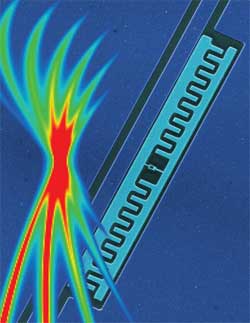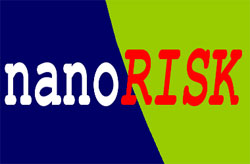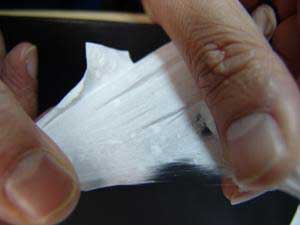 Using artificial atoms on a chip, physicists have taken the next step toward quantum computing by demonstrating that the particle nature of microwave photons can now be detected.
Using artificial atoms on a chip, physicists have taken the next step toward quantum computing by demonstrating that the particle nature of microwave photons can now be detected.
Feb 1st, 2007
Read more
The EU is preparing to channel some 100 million euros into nanomedicine projects annually under its Seventh Framework Programme for research.
Feb 1st, 2007
Read more
 The February issue of nanoRISK looks at the continued uncertainty about the toxicity of carbon-based nanomaterials.
The February issue of nanoRISK looks at the continued uncertainty about the toxicity of carbon-based nanomaterials.
Feb 1st, 2007
Read more
 Researchers prove that nanostructures are stronger than 'large' structures.
Researchers prove that nanostructures are stronger than 'large' structures.
Jan 31st, 2007
Read more
 A molecular machine that operates via a mechanism inspired by a 140 year-old thought experiment.
A molecular machine that operates via a mechanism inspired by a 140 year-old thought experiment.
Jan 31st, 2007
Read more
A novel approach to synthesizing nanowires allows their direct integration with microelectronic systems for the first time.
Jan 31st, 2007
Read more
New nanoparticles that mimic blood platelets.
Jan 31st, 2007
Read more
Nanostructured material offers environmentally safe armor-piercing capability.
Jan 31st, 2007
Read more
MIT reports that the source of concrete's strength and durability lies in the organization of its nanoparticles. The discovery could one day lead to a major reduction in carbon dioxide emissions during manufacturing.
Jan 31st, 2007
Read more
A dedicated group at the University of Florida deals with nanotoxicology.
Jan 30th, 2007
Read more
Study points nanotechnology researchers to strategies that help them more effectively communicate the scale, scope and "wow" of their work to non-technical audiences.
Jan 30th, 2007
Read more
Photoprinted paper supports simultaneous microscale diagnostic tests.
Jan 30th, 2007
Read more
New stabilisation approach yields well-ordered, column-shaped aggregates that can transport charges.
Jan 30th, 2007
Read more
 Pollen capsules that can be filled with nanomaterials could be used for drug delivery.
Pollen capsules that can be filled with nanomaterials could be used for drug delivery.
Jan 30th, 2007
Read more
A keen sensitivity to their environment allows venus flytraps to ensnare their insect meals. Gently graze their trigger hairs, and the carnivorous plants will clamp together their jawlike leaves. Such responsive behavior, which is intrinsic to natural systems, is becoming a key requirement for advanced artificial materials and devices, presenting a substantial scientific and engineering challenge. Materials scientists have now managed to replicate this acute environmental sensitivity on the nanometer scale.
Jan 30th, 2007
Read more
Thin film material for a switchable mirror that can be switched between reflective and transparent states.
Jan 29th, 2007
Read more
 Using artificial atoms on a chip, physicists have taken the next step toward quantum computing by demonstrating that the particle nature of microwave photons can now be detected.
Using artificial atoms on a chip, physicists have taken the next step toward quantum computing by demonstrating that the particle nature of microwave photons can now be detected.




 Subscribe to our Nanotechnology News feed
Subscribe to our Nanotechnology News feed